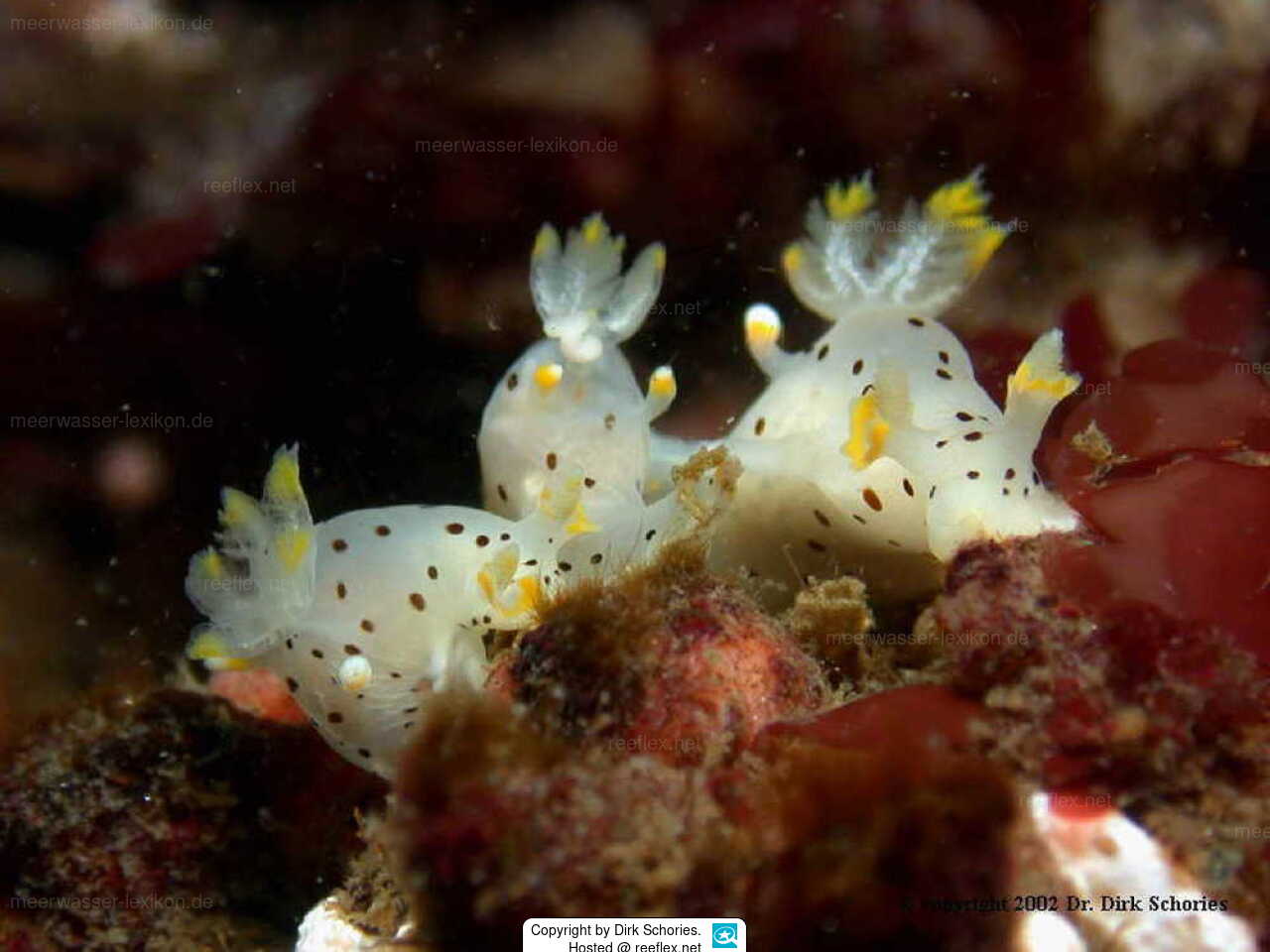Info
Thecacera darwini Pruvot-Fol, 1950
The body is white with scattered spots. There rhinophore sheaths, the tips of the gills, and the posterior tip of the body are bright yellow. The Dalmatian sea slug is found on a variety of hard substrates.Spawning was observed from December until May. Egg masses are whitish ribbons forming spirals of 2 to 3 whorls reaching 3 cm.
This sea slug is very common throughout the year in the intertidal and upper sublittoral. It feeds exclusively on the encrusting bryozoan Beania magellanica.
Its reported that central Chilean populations are heavily infested with the crustacean parasite Ismaila.
Thecacera darwini was first collected in 1845 by Charles Darwin during the famous voyage of the Beagle.
The body is white with scattered spots. There rhinophore sheaths, the tips of the gills, and the posterior tip of the body are bright yellow. The Dalmatian sea slug is found on a variety of hard substrates.Spawning was observed from December until May. Egg masses are whitish ribbons forming spirals of 2 to 3 whorls reaching 3 cm.
This sea slug is very common throughout the year in the intertidal and upper sublittoral. It feeds exclusively on the encrusting bryozoan Beania magellanica.
Its reported that central Chilean populations are heavily infested with the crustacean parasite Ismaila.
Thecacera darwini was first collected in 1845 by Charles Darwin during the famous voyage of the Beagle.







 Dr. Dirk Schories, Deutschland
Dr. Dirk Schories, Deutschland













